Do you have a question about the Siemens SIMATIC HMI TP27 and is the answer not in the manual?
| Display Type | STN LCD |
|---|---|
| Resolution | 320 x 240 pixels |
| Touch Technology | Resistive |
| Touchscreen | Yes |
| Power Supply | 24 V DC |
| Protection Class | IP65 |
| Backlight Lifetime | 50, 000 hours |
| Weight | 1.2 kg |
| Communication Ports | RS-232, RS-485 |
| Operating Temperature | 0 to 50 °C |
| Interfaces | MPI, PROFIBUS |
| Storage Temperature | -20 to 60 °C |
| Display Size | 5.7 inch |
| Number of Colors | 256 colors |
Description of different versions of TP27 and TP37, including display sizes and types.
Information on the suitability of Touch Panels for machine installation.
Summary of event message capabilities and parameters for TP27 and TP37.
Summary of alarm message capabilities and parameters for TP27 and TP37.
Configuration of message logging for printing and data transfer.
Explanation of the fundamental operating principles and user interaction with the Touch Panel.
Description of how the display screen can be divided into multiple windows.
Details on how to use touch-sensitive buttons, input fields, and windows.
Overview of graphical and interactive components used on Touch Panel screens.
Information about pre-configured standard screens and their functions.
Methods for viewing, processing, and selecting screens on the Touch Panel.
Details on assigning password levels for controlling access to functions.
Procedure for logging in and out of the Touch Panel using passwords.
Functions for creating, deleting, and changing passwords and levels.
Classification and description of event, alarm, and system messages.
Methods for viewing message events in the archive and on the Touch Panel.
Explanation of system messages, their causes, and remedies.
Overview of available printing options like messages, buffer, and screen dumps.
Details on configuring printer type and parameters via standard screens.
Explanation of how data records are assigned, stored, and used for recipes.
Using screens for creating, saving, and downloading recipe data records.
Overview of data categories, storage media, and the principles of data storage.
Functionality for backing up and restoring Touch Panel data.
Function to display SIMATIC S5/S7 operand statuses on the Touch Panel.
Function to control SIMATIC S5/S7 operands by modifying and transferring values.
Overview of configurable functions influencing general Touch Panel settings.
Instructions for adjusting the Touch Panel's operating modes.
Step-by-step guide for physically installing the TP27-6, TP27-10, and TP37 units.
Information on necessary electrical connections and EMC compatibility.
Procedure for downloading firmware and configuration to a new Touch Panel.
Description of the Touch Panel's startup sequence and self-test.
Detailed dimensions and mounting cutout specifications for the TP27-6.
Identification and purpose of the various connectors and interfaces on the TP27-6.
Detailed dimensions and mounting cutout specifications for the TP27-10.
Identification and purpose of the various connectors and interfaces on the TP27-10.
Detailed dimensions and mounting cutout specifications for the TP37.
Description of the touch screen and LED indicators on the TP37.
Information on the optional Direct Key Module (DKM) and its variants.
Details on the optional Control Panel Interface (CPI) for connecting to SIMATIC S7 PLCs.
Procedure for cleaning the Touch Panel screen safely and effectively.
Instructions for replacing the backup battery to retain operating data.
Procedure for replacing the back-lighting tubes on the TP37.
Specifications for housing dimensions, mounting cutouts, and degree of protection.
Environmental operating parameters including temperature, humidity, and vibration.
Pin assignment details for the 15-pin Sub-D sockets of IF1A and IF2 interfaces.
Pin assignment details for the 9-pin Sub-D socket of the IF1B interface.
List of common system messages, their causes, and suggested remedies.
Summary of available SIMATIC HMI documentation and their applicability.
Guidelines for handling electronic devices safely to prevent ESD damage.
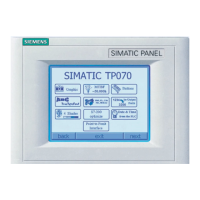
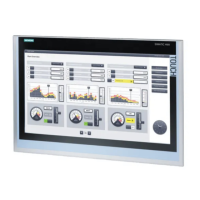





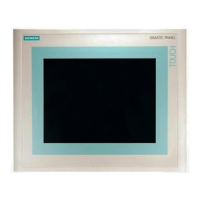

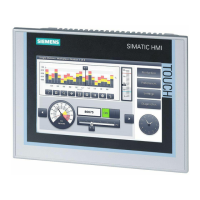
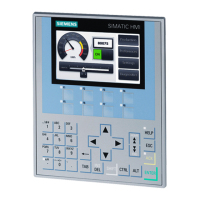

